|
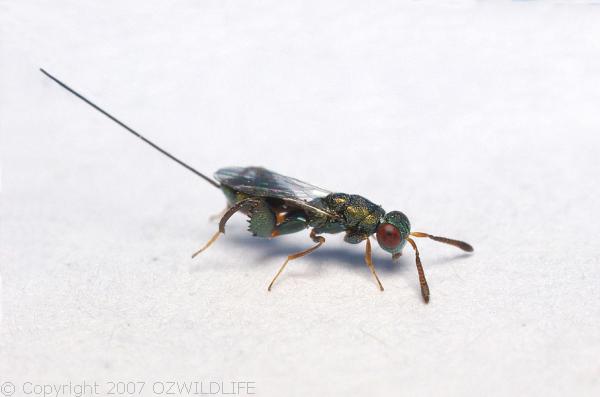
Female showing long ovipositor.
Photograph copyright: ozwildlife - all rights reserved. Used with permission.
|
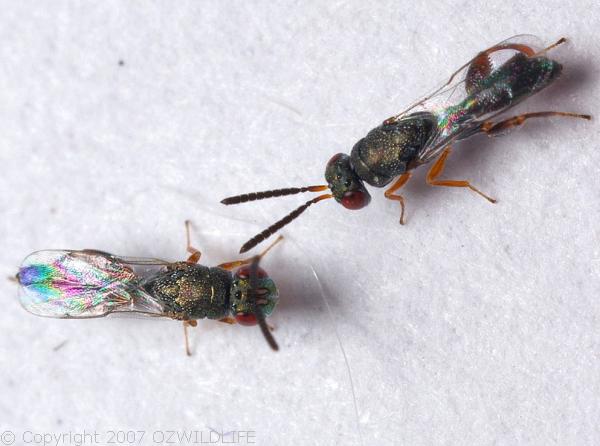
Males have no tail …!
Photograph copyright: ozwildlife - all rights reserved. Used with permission.
|
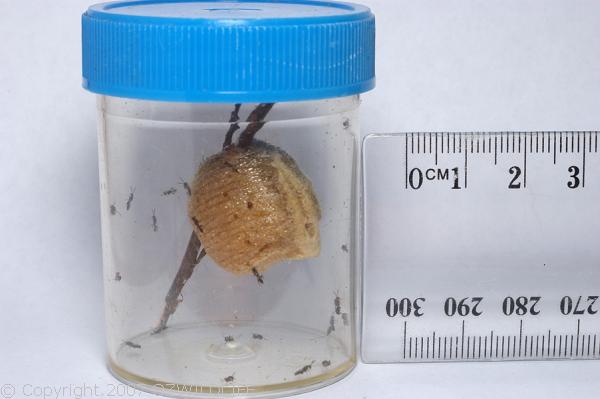
These tiny wasps emerged from this mantis ootheca.
Photograph copyright: ozwildlife - all rights reserved. Used with permission.
|
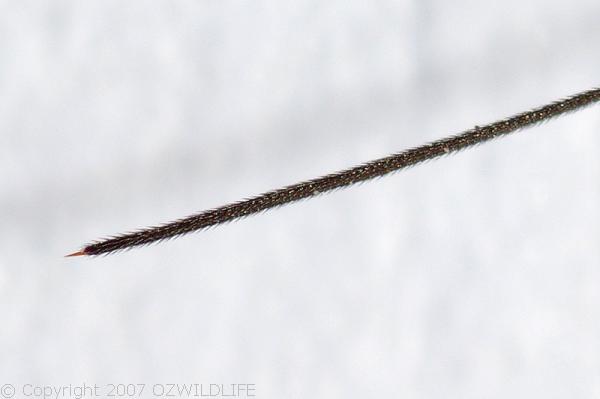
Close up of the ovipositor showing the sharp point for penetrating the mantis egg case.
Photograph copyright: ozwildlife - all rights reserved. Used with permission.
|
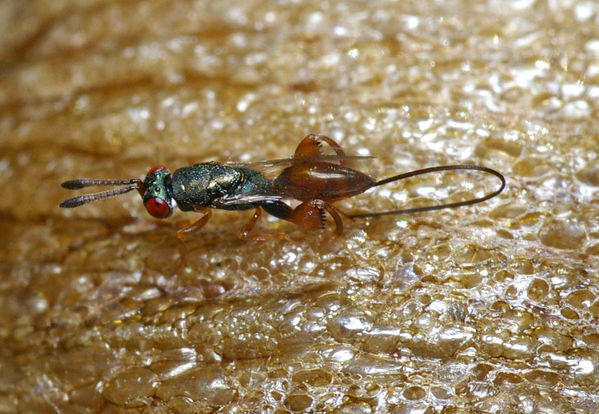
Caught in the act. A Mantis Parasitic Wasp laying eggs in a mantis ootheca.
Photograph copyright: ozwildlife - all rights reserved. Used with permission.
|
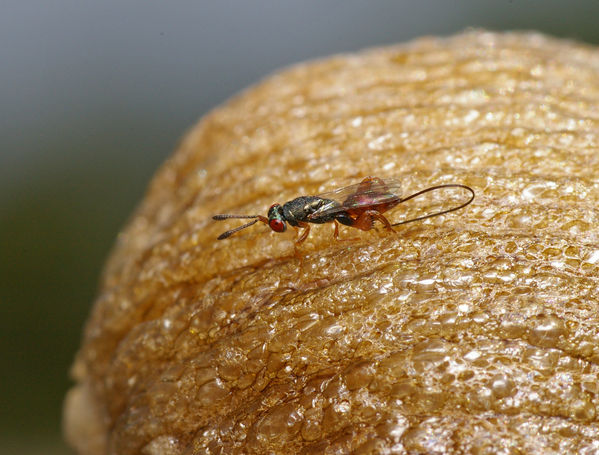
Mantis Parasitic Wasp laying eggs in a mantis ootheca.
Photograph copyright: ozwildlife - all rights reserved. Used with permission.
|
|
|
INSECT FACTS |
Identification
This tiny wasp lays its eggs in the egg case (ootheca) of the Mantis. It has metallic blue/green head and thorax. The abdomen is brown. The rear legs are strong and toothed and used to clasp onto the wings of a female mantis. The wasp is transported around by the mantis until the mantis makes her egg case. The wasp can then deposit her eggs into the fresh frothy mantis ootheca before it hardens.
Size
3mm
Breeding
The female lays pushes here ovipositor (spike at rear) into the mantis ootheca and lays her eggs. The larvae hatch and eat the mantis eggs. The young wasps emerge from the ootheca.
Classification
| Class: | Insecta | | Order: | Hymenoptera | | Family: | Torymidae | | Genus: | Podagrion | | Species: | sp | | Common Name: | Mantis Parasitic Wasp |
|
|

